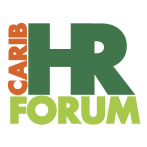Downturn or upturn, an engaged workforce is always a critical lead indicator to productivity and the bottom line. In a downturn however, it’s critical for the continued viability, productivity and success of the organization.

A downturn is a time of focusing on reviewing costs, improving efficiencies, product and service innovation and finding new ways of generating income. Staff retention is critical and should not be taken for granted. Employees should want to stay with their company not because of the absence of a “pull factor” but because of the absence of a “push factor” and the existence of the happy “stay factor.”
The pull factor refers to the softening of the labour market within certain staff categories and industries with redundancies, resulting in less demand for staffing by other companies. The push factor refers to the times when employers are pushing their employees out the door for all the reasons employees cite for resigning.
Janice Andrews from the Nevada Business reported on the 10th February 2009 that Watson Wyatt, a leading consulting firm in their 2008/2009 WorkUSA Report found that companies benefit from a 26% higher employee productivity, lower turnover risk, and are more likely to attract top talent when their employees are engaged. The survey found that highly engaged employees are twice as likely to be top performers with 20% less absent days when compared to the less engaged employee population.
The term “engageable moments” was noted from the report recommendations and I absolutely love it. How do we identify an “engageable moment”? I often see many of these moments but line managers are sometimes so caught up in day to day operations, that these high return moments are not identified much less capitalized on. It is about seeing beyond our nose, fighting myopia and seeing the next couple of chess moves that may take place if we make a certain decision.
The survey data shows that engagement starts off high with new employees but often decreases by over 9% within the first year of employment. Hence, there are numerous opportunities in the first year to counteract that decline. It is important to note as well that at the interviewing stage, the interviewer should not paint an unrealistic picture of the job or the company, since this image may soon be thwarted based on the new recruit’s real experience. Honesty is the best policy?.
The organization is encouraged to have a comprehensive on boarding and orientation programme with specific on the job training and not rely on training by osmosis. The new recruit should be fully aware of their scorecards or deliverables and be given frequent feedback on their progress. Apart from the policies, procedures, work deliverables, the new recruit also needs to get a feel for the company’s cultures with the norms and values. This may include simple bits of advice like where to park, where to eat lunch, always say “good morning or good afternoon”, or always acknowledge someone when passing them in the corridor or in the washroom etc. These bits of advice are necessary when working with multiple generations. A buddy system might be a good idea to assist in the cultural immersion that comes from passing ideas on to new employees.
Employees always appreciate involvement and meaningful communication. It is advisable in a downturn, to explain the company’s plan, direction and to seek ideas from the staff using a bottom up approach. Crises provide the leadership with unique opportunities to assert themselves and further build their brand equity thereby increasing the commitment from the workforce.
The company may also seek to provide un-intimidating ways to solicit feedback from staff on burning issues, questions, assumptions and or complaints with the intention of responding and dispelling conspiracy theories and setting records straight.
If an organization experienced redundancies, there might be a great deal of survivor’s guilt to address. In the absence of redundancies, some companies would have implemented a recruitment freeze; this may increase the workloads of the existing staff. An idea maybe to offer time off during non-peak periods to those employees who have increased work loads. Companies should explore leveraging workplace flexibility options as a non-cash way to illustrate staff appreciation.
As minimal as it may be, reserve funds to serve as bonuses and or incentives or personalized gifts for innovative type rewards. A programme may also be developed to solicit ides on cost savings and or income generating from staff and reward them for implemented ideas. This is a time where business maybe a bit slow so organizations should use the down time to re-group, re-tool and or re-train.
When implementing programmes aimed at building employee engagement, we should focus our efforts on the tier of employees below the fully engaged tier. The fully engaged ones are already working to their maximum capacity, we need to concentrate on gently nudging the fence sitters. Partially engaged and disengaged employees are always a threat to the fully engaged ones in terms of limiting top performance. An organization works as a team, with interdependencies built into it, hence poor or mediocre performance flows through the channels.
Janice Andrews from the Nevada Business Magazine quoted Ilene Gochman at Watson Wyatt as saying: “Improving employee engagement will help drive business results in the long run by improving commitment to corporate goals and generating exceptional individual performance and productivity”.
Employee engagement is such a compound concept and the prescription to achieve it is different for different companies, but I contend that the bones of an engagement strategy are built on common values / ideas of equity, honesty, openness, transparency, integrity, growth, development, respect, recognition, appreciation, involvement and communication. The company can then dissect their organization into various relevant demographics to help craft the prescription that will yield positive engagement results.
Denise Ali
[email_link]
